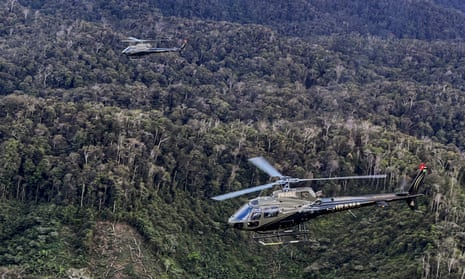For the first time researchers have proven a clear correlation between deforestation and regional precipitation. Scientists hope it may encourage agricultural companies and governments in the Amazon and Congo basin regions and south-east Asia to invest more in protecting trees and other vegetation.
The study found that the more rainforests are cleared in tropical countries, the less local farmers will be able to depend on rain for their crops and pastures.
The paper, published in the journal Nature, adds to fears that the degradation of the Amazon is approaching a tipping point after which the rainforest will no longer be able to generate its own rainfall and the vegetation will dry up.
People living in deforested areas have long provided anecdotal evidence that their microclimates became drier with lower tree cover. Scientists already knew that killing trees reduces evapotranspiration and thus theorised this would result in lower local rainfall.
The team at Leeds University have now proven this using satellite and meteorological records from 2003-17 across pantropical regions.
Even at a small scale, they found an impact, but the decline became more pronounced when the affected area was greater than 50km squared (2,500 sq km). At the largest measured scale of 200km squared (40,000 sq km), the study discovered rainfall was 0.25 percentage points lower each month for every 1 percentage point loss of forest.
This can enter into a vicious cycle, as reductions in rainfall lead to further forest loss, increased fire vulnerability and weaker carbon drawdown.
One of the authors, Prof Dominick Spracklen of the University of Leeds, said 25% to 50% of the rain that fell in the Amazon came from precipitation recycling by the trees. Although the forest is sometimes described as the “lungs of the world”, it functions far more like a heart that pumps water around the region.
He said the local impact of this reduced water recycling was far more obvious, immediate and persuasive to governments and corporations in the global south than arguments about carbon sequestration, which was seen as having more benefits to industrial countries in the northern hemisphere.
after newsletter promotion
“Demonstrating the local benefit of keeping tropical forests standing for the people living nearby has important policy implications,” Spracklen said. “I hope our work will provide a strong incentive for policy and decision makers within tropical nations to conserve tropical forests to help maintain a cooler and wetter local climate, with benefits for nearby agriculture and people.”
The authors also looked forward at the possible effects of further deforestation. For the Congo basin, they estimated a rainfall decline of 16mm a month by the end of the century based on projections of forest loss.
In all regions, the consequences are likely to be felt in cities and farm fields hundreds or thousands of kilometres outside the cleared forest. The study notes that crop yields could decline by 1.25% for each 10 percentage point loss of forest cover.










